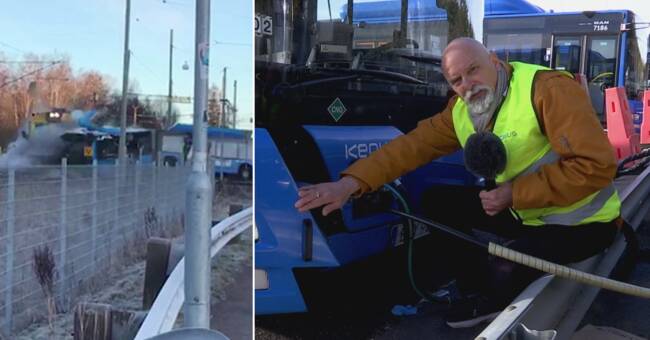On March 8, a bus on its way from the depot suddenly had its engine stopped in the worst possible place - in the middle of a railway crossing at Hisingen in Gothenburg.
A short while later, a train drove at high speed into the bus.
Only happy circumstances meant that no one was seriously injured.
The accident has been explained by the fact that the intersection is dangerous.
But now SVT Nyheter Väst can reveal a, according to the bus company Keolis, probable reason why the bus had its engine stopped.
Safety system shuts off the engine
The accident bus has a system to ensure that the bus doors (for example the gas refueling door) are closed.
If a door is opened when the bus is stationary or crawling, the safety system shuts off the engine.
This cannot be restarted until the error has been rectified.
SVT has received error reports which show that the accident bus was on several occasions in the workshop for repair of a front hatch that was missing.
(See fact box).
The error was fixed, but only provisionally.
In an error report on March 4, the bus company writes: “Large door front malfunction, adjusted.
The door locks should be replaced, repaired provisionally.
Shortage of staff."
Four days later, the accident is a fact.
- If there is a gap in a hatch, you understand what can happen if you drive over a bump or a railway track, says a bus driver.
Clear indications
Henrik Cederqvist, traffic area manager for Keolis Syd, writes on the company's intranet: “It is unfortunate that the bus could not run after stopping and stopped.
We have clear indications that it has to do with a hatch or a hatch sensor on the bus. ”
According to him, the fact that it was a gas bus is irrelevant.
Keolis emphasizes that the investigations are far from complete, but admits that most indications are that it was the bus' own safety system that led to the accident.
- We must learn from the mistakes and look even more at the routines in our workshop, says communications director Karin Nilsson Malmén.

